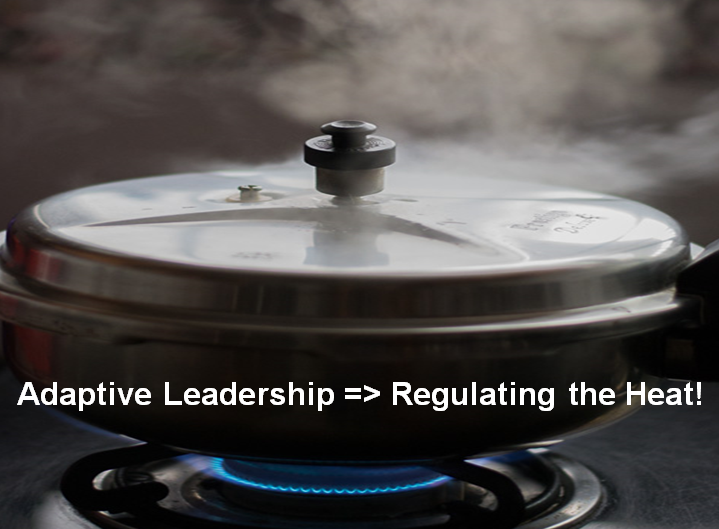
Adaptive leadership is concerned with tackling challenges that, unlike technical problems which require known solutions or routine problem-solving practices to resolve, necessitate that the people involved change their ways.
That’s right: nothing changes if people (YOU) don’t change first! This requires a good understanding of the human dimensions of change.
“Solutions to adaptive challenges reside not in the executive suite but in the collective intelligence of employees at all levels.”
The kind of leadership that mobilises people to make adaptive changes requires leadership that is able to ‘turn up the heat’ in the team or system (organisation or community). This entails igniting and sustaining the unusual levels of energy that people need to be ‘pumped up’ and deeply engaged in what it takes to change the current state of affairs.
Such unusual levels of energy can only be achieved by turning up the heat to generate the pressure and ‘disturbance’ required for people to think creatively. The real challenge, however, is to do this without blowing the pressure cooker. That is, enabling people to operate in a balanced and ‘productive zone’ of disturbance or discomfort – listen to this speech from Harvard’s Ronald Heifetz himself.
In other words, as a leader you need to:
“Keep your hand on the thermostat. If the heat’s too low, people won’t make difficult decisions. If it’s too high, they might panic.”
(Heifetz, Grashow, & Linsky, 2009)
Real life examples
Examples of the above include the way great leaders such as Gandhi, Mandela, Martin Luther King and Jesus of Nazareth mobilised people. The last two are also examples of what happens when ‘turning up the heat’ too high – that’s why they got rid of them.
In the organisational/business world, this type of mobilisation translates into perusing possibility-finding and usually ends up into what’s called ‘positively deviant’ or extraordinary performance/success. The Rocky Flats Plant story, told by Cameron and Lavine (2006), is a good example.
Summary
A detailed summary of the above, including a 7 step process on how to design effective interventions to mobilise people to take on adaptive challenges, courtesy of Lifelong Faith (2011), can be downloaded here.
Happy heat regulation!
* * * *
Warning and disclaimer:
Doing the above is a tricky and risky business – seriously!
Remember the ‘knowing-doing gap’, which means people may learn a lot by reading instructions but effectively applying this knowledge to achieve results in another ball game altogether!
Contact me if you need assistance.
Sebastian Salicru (Business Psychologist) | Leadership Development Expert, Executive Coach, Facilitator, Researcher and Author | sss@pts.net.au | www.pts.net.au



